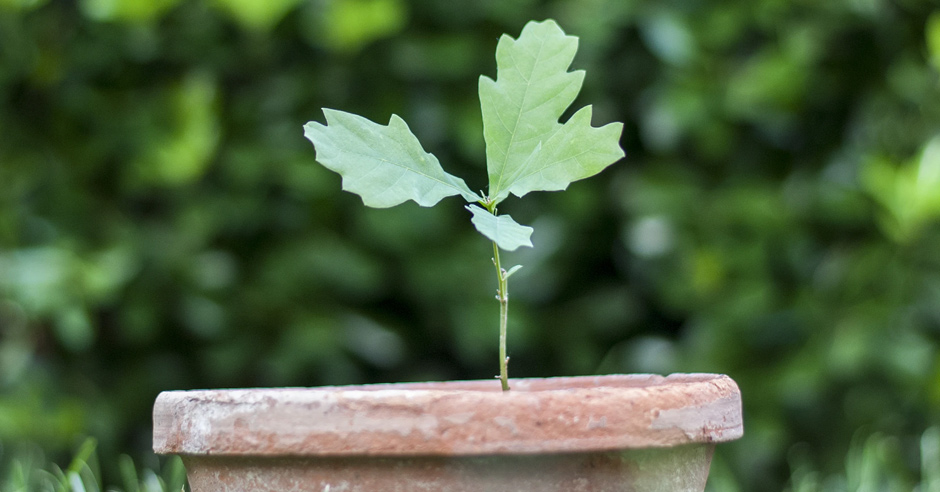
Outside, the seasons are changing. The falling leaves recently gave way to snow-covered walkways, and, before we know it, the blooming flowers of spring will be upon us. For many, I’m sure these changing seasons are a welcome change of pace, as we mourn the losses– from vacations and community connections to jobs and human lives — of 2020 and look with cautious anticipation towards a new normal in the coming months.
For me, the seasons are changing inside, too. Finding my identity as a new mom to a curious and willful little girl. Adjusting to the routines of staying at home, after relinquishing my position as a middle school teacher. Embracing my growing passion for environmentalism and the zero waste movement after years of sitting on the sidelines.
As the seasons around me change, the things I need to live out my life change as well. I own easily more than I did at this time last year. A crib, a baby swing, a few dozen books, and a splattering of toys. Twice as many t-shirts (though half as many dress slacks), a reflection of countless spit-up accidents and no more “days at the office.” More mason jars than I ever thought I would need (but that are inevitably always in use when I reach for them).
And as I approach a decade of minimalism, I have come to see a much more broad sense of ownership, one where I must take responsibility not just for the things that remain in my life, but also for the things that pass through.
The average American home has more than 300,000 items in it. This staggering figure is enough to make anyone reach for the donation box.
And so, as the seasons of my life change, I am increasingly mindful of the environmental impact of my changing needs. Here are some principles guiding me in my pursuit of less (environmental impact, that is):
1. Embrace community to meet your needs secondhand.
As an admin of my local Buy Nothing group, I’m floored by the generosity of my community, who offer complete strangers everything from blenders to jackets with nothing expected in return. Even without a formalized network for gifting, family, friends, neighbors, and co-workers can all become valuable resources to borrow rarely-used items or source material goods (from kitchenware to clothes) secondhand. Passing on unused items in a similar manner strengthens community bonds while reducing landfill waste. As a bonus, meeting needs and wants in your local community is substantially more rewarding than tossing your discarded possessions into any ubiquitous parking lot “donation bin.”
2. Choose multi-purpose items to reduce clutter and environmental impact.
For children, this is often referred to as the difference between “open-ended” toys which have multiple possible uses (such as blocks), and “close-ended” toys with a singular purpose (like a pirate dress-up costume). But there are ample ways to embrace the multi-purpose in our adult life as well. One set of insulated stainless steel tumblers can replace all your drinking glasses, from wine glasses to coffee mugs. A good cast iron skillet can replace an overflowing cabinet of mismatched T-Fal and discolored sauté pans. One pair of comfortable, neutral-colored shoes can replace a closetful of shoes that work with only one outfit. You get the idea.
3. Consider the entire lifecycle of the product you are buying.
Look at the sourcing of a product— is your wood furniture or paper from sustainably managed forests? Is your coffee shade-grown or rainforest friendly? Then, think about the environmental impact of a product when it is past its useful life. Some materials– like glass, silicone, and cardboard– are endlessly recyclable or compostable. Single use packaging, grocery store bags, and plastic toys, on the other hand, are likely on a one-way trip to landfills or oceans (in fact, only 9% of plastic is ever recycled– and most plastics are unable to be recycled more than once).
4. Fight throwaway culture.
Resist fast fashion with a carefully curated wardrobe of clothes you love and wear regularly. Don’t upgrade your phone, car, or appliances every time a new model is advertised– instead, upgrade your standards by supporting companies that make durable, long-lasting goods.
5. Search out creative solutions to re-home and recycle unwanted possessions.
While reducing the waste I bring into my life is undoubtedly easier than ensuring the responsible disposal of items on their way out, there are creative recycling solutions for everything from worn-out sneakers to old appliances and unused medication. Municipal recycling solutions (which are rarely adequate) and gifting within your local community are wonderful starting places, but certainly not the only options for responsibly discarding things that no longer add value to your life.
This season of immense change is also, for me, a season of reckoning. A time to come to terms with the deforestation, the pollution, and the overflowing landfills that result from the choices that you and I and billions of other consumers (and corporations) make on a daily basis. A time to make better— not perfect, but better— choices for the planet, knowing that the intentionality in each of our small changes has the potential to change the world. A season of deciding to own my impact, and not just my stuff.
About the Author: Jennifer Newton is a minimalist mama who is passionate about empowering others to live their values and be kind to the environment around us. She writes at Sustaininitiative.com.